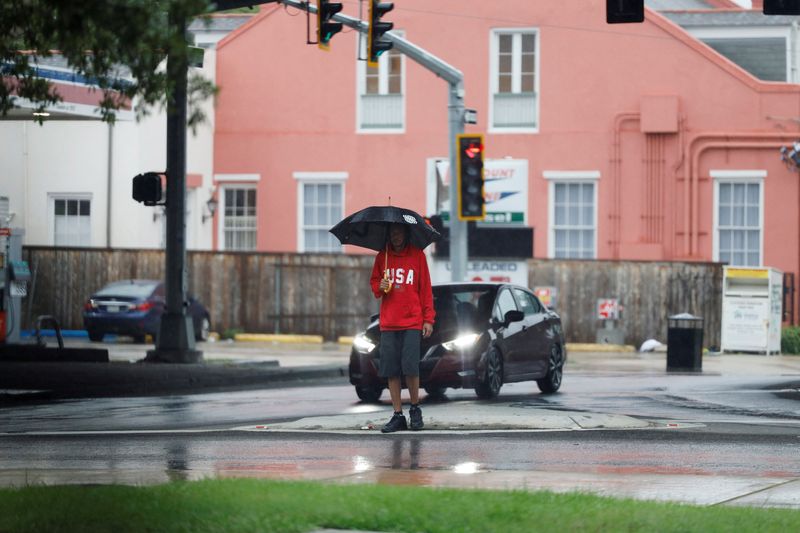By Ned Randolph
NEW ORLEANS (Reuters) – Hurricane Francine made landfall in southern Louisiana on Wednesday, battering New Orleans with heavy rain and gusty winds, while the broader Gulf Coast was threatened with a potentially deadly storm surge that led to evacuation orders for thousands of people.
Francine reached maximum sustained winds of 75 miles per hour after the eye of the storm moved inland over southern Louisiana and was about 50 miles west-southwest of New Orleans, the National Hurricane Center said.
The hurricane center briefly upgraded the storm from Category 1 to Category 2 on the five-step Saffir-Simpson scale just before it made landfall. Even as a Category 1 storm, the very dangerous winds can cause damage, and the entire Gulf Coast in Louisiana and Mississippi was warned of a storm surge that the hurricane center called life-threatening.
According to PowerOutage.us, more than 200,000 homes and businesses across Louisiana had lost electricity.
New Orleans’ iconic French Quarter neighborhood, known for its touristy bars and restaurants, was locked down with a conspicuous police presence and very few pedestrians.
On Bourbon Street, Gina Kralek said she was working at the Clover Grill as cover for some co-workers who evacuated before the storm.
“Normally I evacuate, but I have my three dogs,” Kralek said. “Not everyone wants to take me with the dogs.”
Louisiana Governor Jeff Landry and US President Joe Biden each declared a state of emergency ahead of the storm, freeing up emergency management resources and possible financial assistance in the event of severe damage.
More than 78,000 commercial properties worth about $143 billion were in the direct path of the storm, according to financial researcher Moody’s (NYSE:) Ratings. Those buildings have a greater than 50% chance of being hit by winds of at least 50 miles per hour, the wind speed at which some damage is likely, Moody’s said.
Several parishes or counties on or near Louisiana’s Gulf Coast have previously issued mandatory evacuation orders, and the state transportation department has issued evacuation maps. The city of New Orleans distributed sandbags at five locations.
Any major storm near Louisiana brings back memories of Hurricane Katrina, the 2005 storm that devastated New Orleans and surrounding areas, killing nearly 1,400 people and causing $125 billion in damage, according to a Hurricane Center report from 2023.
Water from Lake Pontchartrain, which borders the city to the north, began flowing over the sea wall. Since Katrina, however, the federal government has built a $14.5 billion levee protection system, including stormwater gates that can prevent storm surges in the city’s internal drainage channels, which failed catastrophically during Hurricane Katrina.
Grocery stores were boarded up by late afternoon, but not before veterans of previous storms had loaded up on supplies.
“We’re all set. We’ve got our canned goods. We’ve got our supplies,” said Steve Rodriguez, who has lived in New Orleans since 1983 and was trying to get some last-minute shopping done.

The storm has already disrupted energy production and agricultural exports from the US Gulf of Mexico.
Nearly 39% of oil and nearly half of production in the U.S. Gulf of Mexico were offline on Wednesday, according to the offshore regulator. A total of 171 production platforms and three drilling rigs had been evacuated.





















